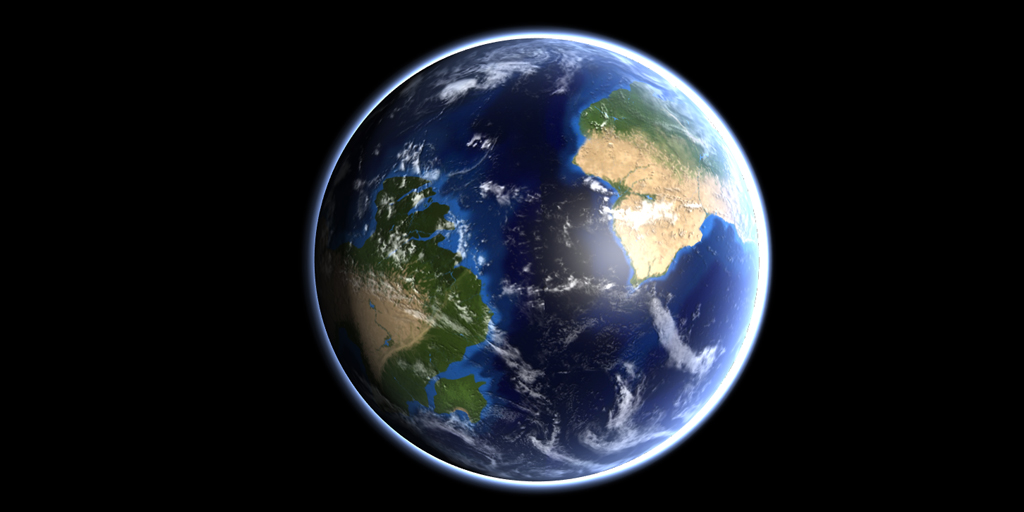Nijin-Konai
Planetary information
- Planet mass: 1.907441 M⊕
- planet diameter: 1.8046354 D⊕ [diameter 23020.424 Km]
- Axial tilt: 20°30' - 23°21'
- average mean temperature: 23.06 °C [68.108°F]
- bond Albedo: 30%
- greenhouse effect: 59.4 °C
Atmosphere
- Nitrogen (80%)
- Oxigen (19%)
- other gases (1%)
Frequent powerful solar storms make the formation of an adeguate, Earth-like, Ozone layer impossible. Nonetheless the formation of Ozone is higher than on Earth given the higher concentration of EUVs coming from the star, which are necessary for molecule to form; this creates a somewhat balanced situation, with an ozone layer that's not very thick but that regenerates at a high enough rate to contain the damage the star inflicts on it efficiently. Avoiding the use of any chemicals that can affect Ozone production is vital on the planet.
Surface Radioactivity
Radioactivity on the planet surface fluctuates around 2.000 and 6.000 mSv depending on day-to-day solar activity, levels high enough to be lethal to humans. During solar storms, the background radiation raises to 20.000 to 30.000 mSv, depending on the severity of the storm, during these periods life on the planet seeks shelter, with only a few animals and plants specialized enough to face them head on. Historic radiation peaks touch 50.000 mSv (if not higher), these coincide with the end of the megafauna cycles. To counteract such high background radioaction, Humans had to create specialized domes around their cities, only exiting these secure areas with radiation suits or unprotected for brief periods of time and medical treatments at the ready. In 2355 Humanity managed to replicate the first Reshtu radiation suit, once limited to the ones found in their ships, having the possibility to make new suits meant Humans were now able to access the outside freely with no time limits. More recently the use of enzimatic pills became widespread, allowing humans to exit the cities without the need of protective gearand finally demolishing the old domes above the cities.Extinct and Extant Sophonts
The planet has been home to at least two other sophont species before Humankind colonized it. The first and only native species to the planet were the L'lmanü, of which not much is known, although they were allegedly studied in depth by the second sophonts to come, the Precursors, from which the name came from. The L'lmanü went extinct around 32 Million years ago, at the end of the last megafauna cicle (Tv-Kn extinction), their technological level at the time of extinction was at around the same stage as Iron age Humanity. Most of what we know on them has been shared by the Deshivohai, who still have the relics the Precursors recovered under their control. The second species to come to the planet were the Precursors, of which we know so little that most of what we teach about them is based on conjecture and reconstructions on insignificant amounts of information. They were a (possibly) insectoid species of sophonts who created a vast empire that stretched perhaps over the whole Milky Way; they created Exotechnologies that gave them the ablity to defy the limits of the known universe, created a fully automatic workforce to aid them in building this massive empire. They disappeared long ago, leaving behind the machines they used to erect their structures, these machines are still here today and keep an eye on Precursor technologies, making sure no one gets a chance at studying them.Interactive planetary map
Fauna & Flora
The planet is very rich in both Flora and Fauna despite the inhospitable conditions.
Most of the planet's megafauna is found underwater, with unique biomes never seen on Earth.
Some aquatic plantlife on the planet evolved to enormous sizes and, in some cases, to rely on chemosynthesis or mixotrophy to avoid the need for sunlight, creating few underwater deserts between dense forests, lush grass plains and ancestral underwater trees.
On the surface the planet may seem like Earth, with verdant forests and rocky deserts but appearances are deceiving as deserts may just be sleeping evanescent forests.
The planet's Fauna is mainly composed of what Humans would more closely describe as amphibians, with more advanced forms of life absent or otherwise replaced by invertebrate life.
Several animals on the planet are referred to commonly as fish by the people, however these are, again, "amphibians", evolved to fill the same niches fish once occupied.
Fossil remains dating all the way back to the Nokruneri period (590-481 Mya) are the last actual fish to ever exist on the planet, they since went extinct and their niches filled by the animals we see today.
The fish on the planet were amphisbaenic (having two heads one on each end of the body) and had an active pump as a respiratory system.
Alternative Name(s)
Tauria, Darwin, HIP 531 A-5
Type
Planet
Included Locations
Characters in Location
Remove these ads. Join the Worldbuilders Guild











Comments